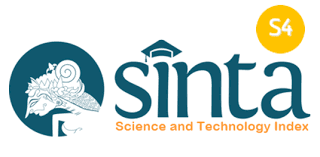Artikel (464)
The Influence of Learning Models and Mathematical Abilities on Student Learning Outcomes on the Subject of Chemical Equilibrium. This research aims to determine the influence of learning models, mathematical abilities and the interaction between learning models and mathematical abilities on student ...
Jurnal Pendidikan dan Pembelajaran Kimia; Vol 13, No 2 (2024): Jurnal Pendidikan dan Pembelajaran Kimia; 100-109 | 2024
Abstract: Differences in Learning Outcomes and Critical Thinking Skills of Students Taught with Discovery Learning Model and Probleam Based Learning Assisted by Powerpoint Media on Acid-Base Material. This study aims to examine the learning outcomes and critical thinking skills of students instruct...
Jurnal Pendidikan dan Pembelajaran Kimia; Vol 13, No 2 (2024): Jurnal Pendidikan dan Pembelajaran Kimia; 92-99 | 2024
This research aims to describe teachers' needs for HOTS-based assessment instruments that can be used in evaluating student learning outcomes in class X SMA. Needs analysis is carried out based on the first stage of the ADDIE model, namely (Analyst). The methods used in this research are survey and ...
Jurnal Pendidikan dan Pembelajaran Kimia; Vol 13, No 1 (2024): Jurnal Pendidikan dan Pembelajaran Kimia; 142-151 | 2024
There several problems in efforts to improve students' literacy host skills caused by the inaccuracy of learning models and media used for abstract chemical material, so it is necessary to use appropriate learning models and media. This study aims to determine the significant differences between stu...
Jurnal Pendidikan dan Pembelajaran Kimia; Vol 13, No 1 (2024): Jurnal Pendidikan dan Pembelajaran Kimia; 133-141 | 2024
Abstract: Effectiveness of LKPD Based on Chemical Representation Using the Discovery Learning Model in Improving Science Process Skills in Chemical Equilibrium Material . This research aims to describe the effectiveness of chemical representation-based LKPD with discovery learning models in improvin...
Jurnal Pendidikan dan Pembelajaran Kimia; Vol 13, No 1 (2024): Jurnal Pendidikan dan Pembelajaran Kimia; 123-132 | 2024
. This research aims to improve the chemistry learning outcomes of X.3 students at SMA Negeri 5 Palembang through the TaRL approach. The type of data used is quantitative and qualitative data. Qualitative through direct observation, observation instruments and documentation. Meanwhile, quantitative ...
Jurnal Pendidikan dan Pembelajaran Kimia; Vol 13, No 1 (2024): Jurnal Pendidikan dan Pembelajaran Kimia; 101-112 | 2024
The research carried out was research and development to obtain instruments for HOTS-based reaction rates. The development of this item instrument is carried out first by following the steps for preparing HOTS questions which of course also pay attention to the characteristics of the HOTS question...
Jurnal Pendidikan dan Pembelajaran Kimia; Vol 13, No 1 (2024): Jurnal Pendidikan dan Pembelajaran Kimia; 77-90 | 2024
Development the Test Items Based on High Order Thinking Skills in Chemical Equilibrium Materials Using Rasch Model. Objectives:This study aims to develop HOTS (High Order Thinking Skill) based items on chemical equilibrium material using the Rasch model. Methods: The type of research used is researc...
Jurnal Pendidikan dan Pembelajaran Kimia; Vol 13, No 1 (2024): Jurnal Pendidikan dan Pembelajaran Kimia; 1-16 | 2024
Abstrak: Penerapan Model Pembelajaran Teams Games Tournament (TGT) berbantuan Media Kahoot terhadap Minat dan Hasil Belajar Siswa Kelas XI pada Materi Laju Reaksi. Penelitian ini bertujuan untuk mengetahui hasil belajar, minat belajar dan hubungan minat dengan hasil belajar yang dilakukan di SMA Swa...
Jurnal Pendidikan dan Pembelajaran Kimia; Vol 13, No 1 (2024): Jurnal Pendidikan dan Pembelajaran Kimia; 46-54 | 2024
Differences in Learning Outcomes and Critical Thinking Ability of Students Taught Using Learning Video Media and PowerPoint with Problem Based Learning Model on Reaction Rate Material. This study aims to determine the differences in learning outcomes and critical thinking Ability of students as well...
Jurnal Pendidikan dan Pembelajaran Kimia; Vol 13, No 1 (2024): Jurnal Pendidikan dan Pembelajaran Kimia; 36-45 | 2024


